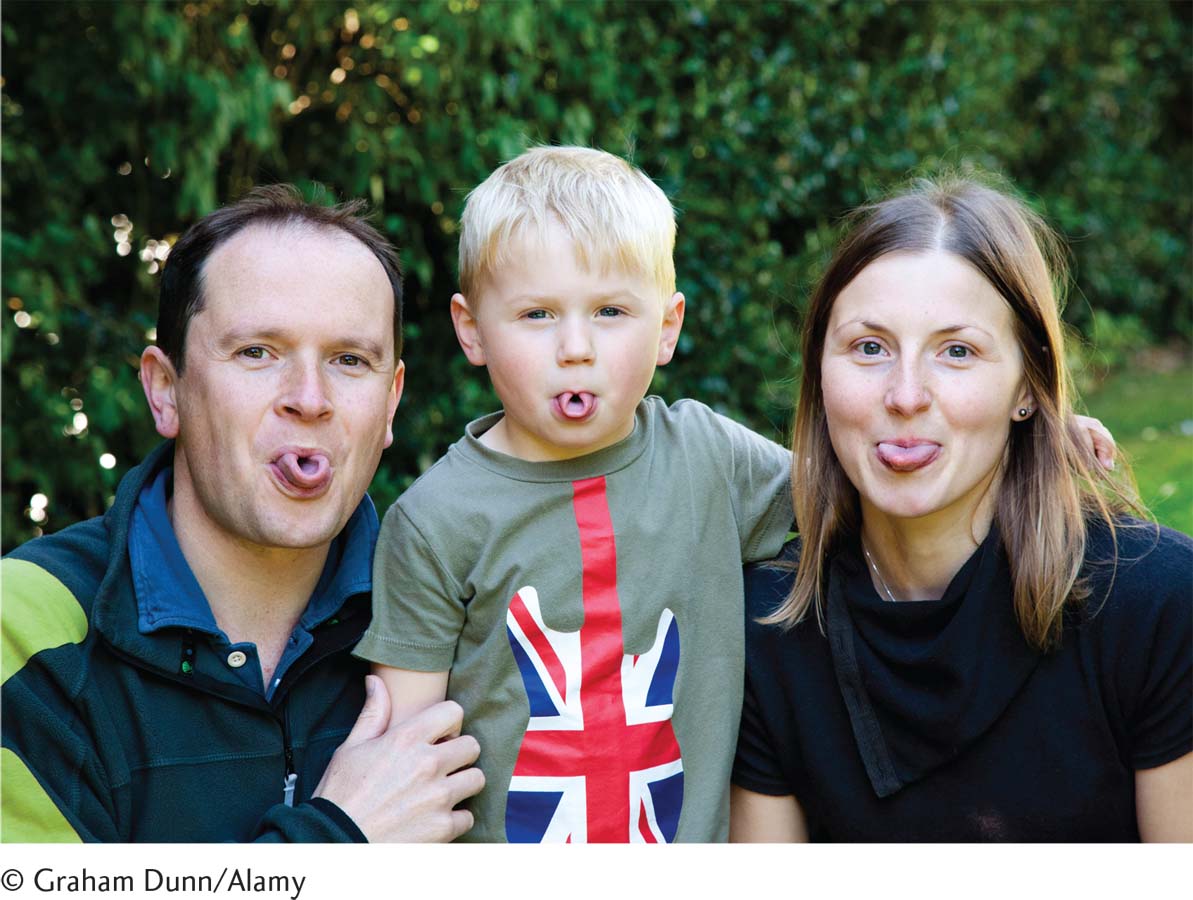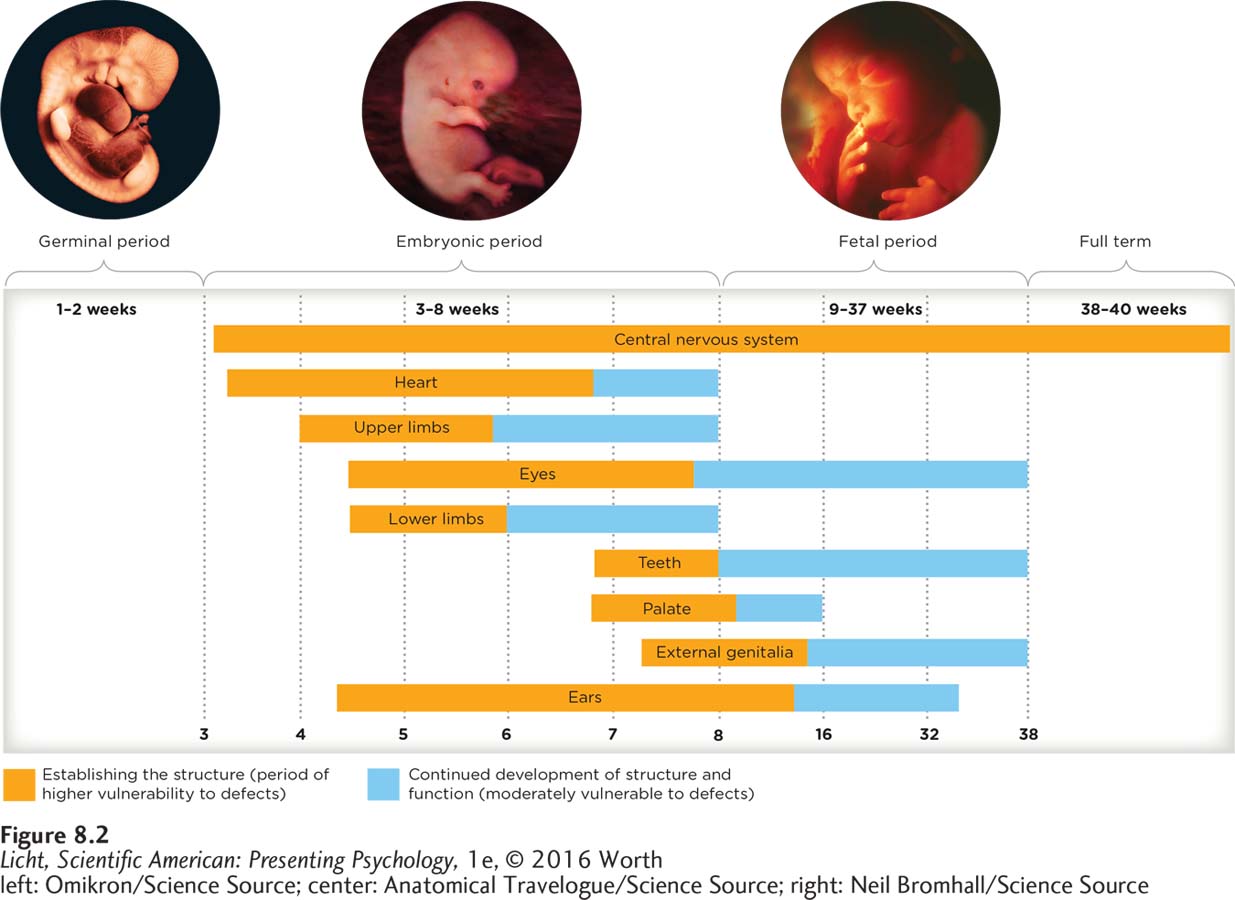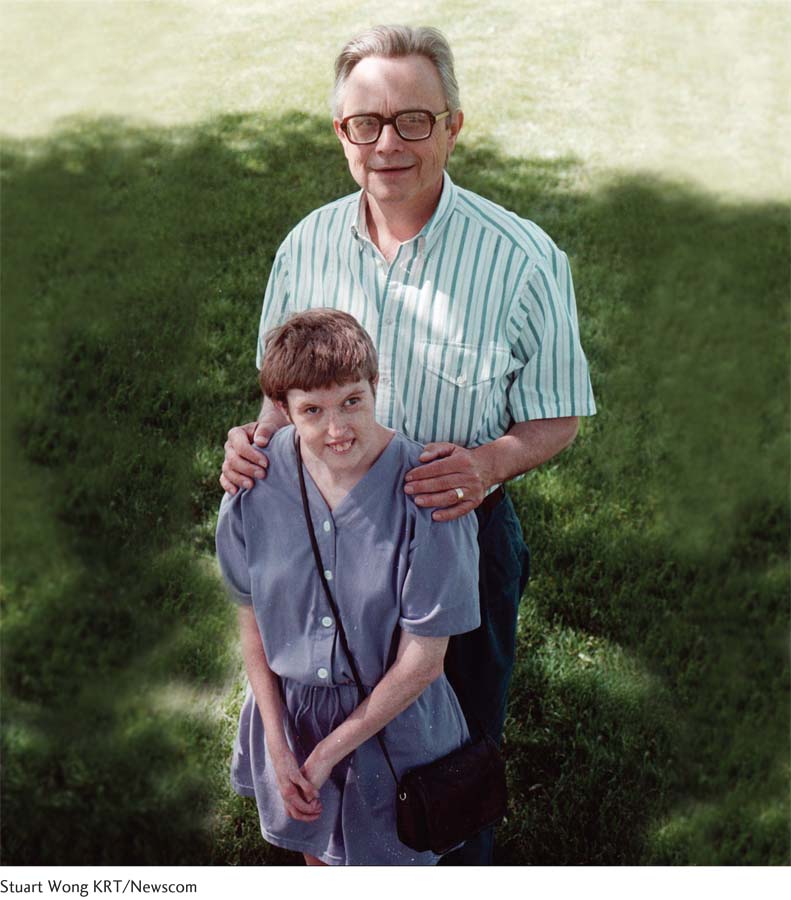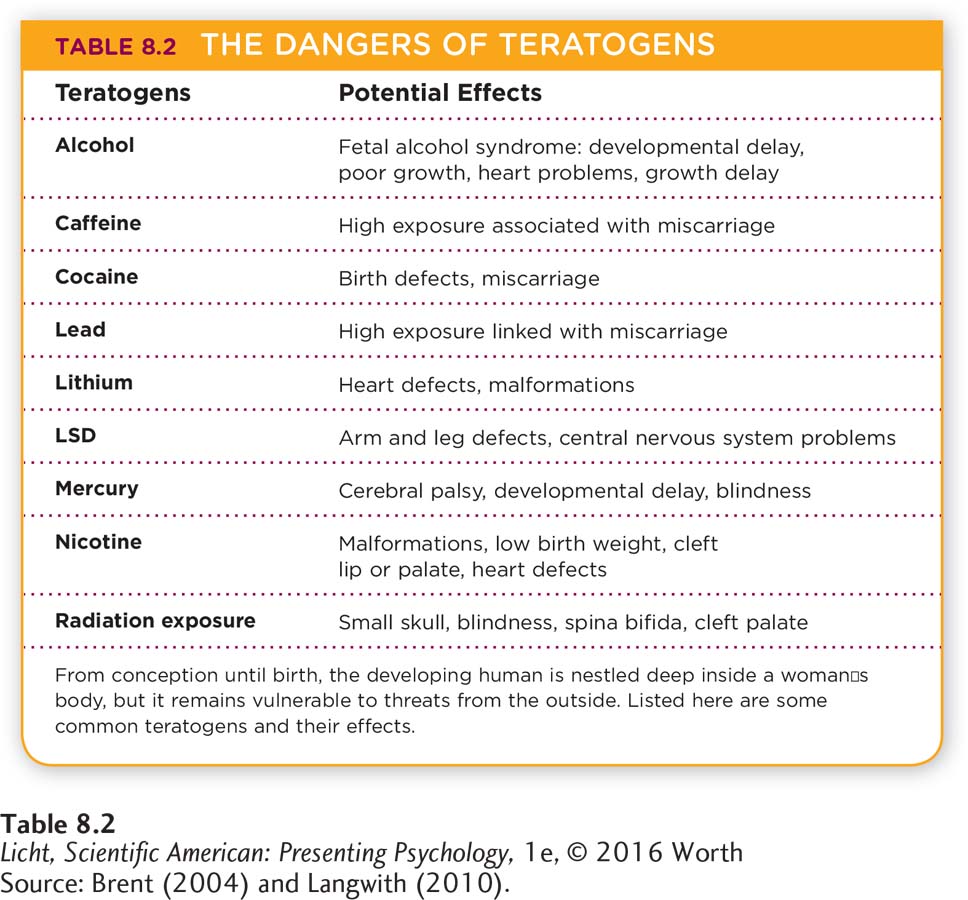8.2 Genetics, Conception, and Prenatal Development
 16 AND PREGNANT Jasmine has always had a mind of her own. As a teenager, she pretty much did as she pleased. If her mother forbade her to leave the house, she would go out and party extra-
16 AND PREGNANT Jasmine has always had a mind of her own. As a teenager, she pretty much did as she pleased. If her mother forbade her to leave the house, she would go out and party extra-
A few months later, she began dating an older guy who was, as she describes, “the definition of a bad boy.” He was 19 years old, ran with the wrong crowd, and would soon become the father of her firstborn child. Getting pregnant was not exactly planned, nor was it something she couldn’t have predicted; at 16, Jasmine was well aware of the consequences of sexual intercourse. But like many adolescents, she was living in the moment, not giving a whole lot of thought to the long-
Being pregnant with Jocelyn was a breeze. Apart from having strange cravings (bologna sandwiches and Doritos), Jasmine did not experience typical symptoms such as morning sickness and fatigue. “I didn’t feel like I was pregnant.” And like any normal 16-
After a grueling labor lasting 36 hours, Jasmine was somewhat surprised by her newborn’s appearance. “I was grossed out, honestly,” Jasmine says. “She was covered with slime and ooze.” But as soon as the nurses cleaned baby Jocelyn, she looked much more like a sweet little cherub. Okay, thought Jasmine, She is kind of cute . . . and she came out of me! It was mind-
Chromosomes and Genes
LO 4 Examine the role genes play in our development and identify the biological factors that determine sex.
chromosomes Inherited threadlike structures composed of deoxyribonucleic acid (DNA).
deoxyribonucleic acid (DNA) A molecule that provides the instructions for the development and production of cells.
gene Specified segment of a DNA molecule.
In order to understand human development, you must have a basic understanding of chromosomes and genes. With the exception of red blood cells, every cell in the human body has a nucleus at its center. Within this nucleus is material containing the blueprint or plan for the building of a complete person. This material is coiled tightly into 46 chromosomes, the threadlike structures we inherit from our biological parents (23 from our father and 23 from our mother). A chromosome contains one molecule of deoxyribonucleic acid (DNA). Looking at the DNA molecule in Figure 8.1, below, you can see a specific section along its length has been identified. This section corresponds to a gene, and genes provide the instructions for making proteins. The proteins encoded by genes determine the texture of your hair, the color of your eyes, and some aspects of your personality. Genes influence nearly every dimension of the complex living system known as YOU.

Every cell in your body, except red blood cells and sex cells (sperm or egg), contains a full set of 23 chromosome pairs like those shown in the photo on the far right. These 23 chromosome pairs contain the full blueprint for you as a complete, unique person. The primary component of each chromosome is a single, tightly wound molecule of DNA. Within that DNA are around 21,000 genes, each determining specific traits such as hair texture. Note the sex chromosomes (X and Y) on the lower right, indicating the sex is male.
zygote A single cell formed by the union of a sperm cell and egg.
Your chromosomes, and all the genes they contain, come from your biological parents. In the moment of conception, your father’s sperm united with your mother’s egg to form a zygote, a single cell that eventually gave rise to the trillions of cells that now make up your body (Sherwood, 2010). Typically, both sperm and egg contain 23 chromosomes, so the resulting zygote has 23 pairs of chromosomes, or 46 total. The 23rd pair of chromosomes, also referred to as the sex chromosomes, includes specific instructions for the zygote to develop into a male or female. Let’s learn how this happens.
SEX DETERMINATION The egg from the mother contributes an X chromosome to the 23rd pair, and the sperm from the father contributes either an X chromosome or a Y chromosome. If the sperm carries an X, the genetic sex is XX, and the zygote generally develops into a female. If the sperm carries a Y, the genetic sex is XY, and the zygote typically develops into a male. This designation of genetic sex is called sex determination, and it guides the activity of hormones that direct the development of reproductive organs and structures (Ngun, Ghahramani, Sánchez, Bocklandt, & Vilain, 2011). About 50% of sperm carry the X chromosome, and 50% carry the Y chromosome, which explains why about half the population is male (XY) and the other half is female (XX).
androgens The male hormones secreted by the testes in males.
estrogen The female hormone secreted primarily by the ovaries in females.
testosterone An androgen produced by the testes.
Genetic sex is established at the moment of conception and remains constant throughout life, but what happens next? In other words, how does the developing person acquire male or female reproductive anatomy? In a genetic male, the presence of the Y chromosome causes the fetal sex glands (also known as gonads) to become testes. If the Y chromosome is not present, as in the case of a genetic female, then the gonads develop into ovaries (Hines, 2011a). Both the testes and ovaries secrete sex hormones that influence the development of reproductive organs: androgens in the case of the testes and estrogen in the case of the ovaries. Testosterone, for example, is an androgen that influences whether male or female genitals develop. Beginning about 7 weeks after conception, the sex of the developing person can be determined through blood tests (Devaney, Palomaki, Scott, & Bianchi, 2011). By the end of the first trimester, genital anatomy can be determined by ultrasound (Scheffer et al., 2010).
intersexual Ambiguous or inconsistent biological indicators of male or female in the sexual structures and organs.
DIFFERENCES OF SEXUAL DEVELOPMENT In some cases, hormonal imbalances and genetic abnormalities lead to differences of sex development (Topp, 2013). Such disparities result from “congenital conditions in which development of chromosomal, gonadal, or anatomic sex is atypical” (Lee, Houk, Ahmed, & Hughes, 2006, p. e488). According to the American Psychiatric Association, intersexual refers to having “conflicting or ambiguous biological indicators” of male or female in sexual structures and organs (2013, p. 451). Around 1% of infants are found to have differences of sex development at birth. They once might have been called “hermaphrodites,” but such terminology is outdated, derogatory, and misleading because it refers to the impossible condition of being both fully male and fully female (Vilain, 2008). There are various types of intersexual development (Table 8.1), but one example might be a genetic female (XX) or male (XY) who has sexual structures and organs that are ambiguous or inconsistent with genetic sex. In this case, we see that genes do not tell the whole story of human development. Let’s explore the relationship between genotype and phenotype.

LO 5 Discuss how genotype and phenotype relate to development.
genotype An individual’s complete collection of genes.
phenotype The observable expression or characteristics of one’s genetic inheritance.
GENOTYPE AND PHENOTYPE Recall that most of the cells in your body have 23 chromosome pairs (46 chromosomes total). These chromosomes are unique to you and are known as your genotype. Genotypes do not change in response to the environment, but they do interact with the environment. Because so much variability exists in the surrounding world, the outcome of this interaction is not predetermined. The color and appearance of your skin, for example, result from an interplay between your genotype and a variety of environmental factors including sun and wind exposure, age, nutrition, and smoking—
CONNECTIONS
In Chapter 7, we described heritability as the degree to which heredity is responsible for a particular characteristic. Here, we see that around 80–
epigenetics A field of study that examines the processes involved in the development of phenotypes.
You might be wondering what all this talk of genotype and phenotype has to do with psychology. Our genetic makeup influences our behavior, and psychologists are interested in learning how this process occurs. Consider schizophrenia, a psychological disorder (Chapter 12) with symptoms ranging from hallucinations to emotional problems. A large body of evidence now suggests that a person’s genotype may predispose him to developing schizophrenia. Researchers report heritability rates as high as 80% to 85% (Craddock, O’Donovan, & Owen, 2005; Tandon, Keshavan, & Nasrallah, 2008b). But the expression or manifestation of the disorder results from a combination of genotype and experience, including diet, stress, toxins, and early parenting (Champagne & Mashoodh, 2009; Zhang & Meaney, 2010). Identical twins, who have the same genotype, may display different phenotypes, including distinct expressions of schizophrenia if they both have this disorder. This is because schizophrenia, or any psychological phenomenon, results from complex relationships between genes and environment. Understanding these relationships is the main thrust of epigenetics, a field that examines the processes involved in the development of phenotypes.

The colored lights are an artistic representation of the human genome, the complete set of DNA found in most cells in the body. Researchers with the Human Genome Project have decoded the entire human genome, which contains about 21,000 DNA segments known as genes (Pennisi, 2012, September 5). Genes are the blueprints for proteins that endow you with a unique set of traits, including eye color, hair texture, and—
dominant gene One of a pair of genes that has power over the expression of an inherited characteristic.
recessive gene One of a pair of genes that is dominated by the other gene in the pair.

Urban myth tells us that tongue-
DOMINANT AND RECESSIVE GENES Genes are behind just about every human trait you can imagine—
Now that we have a basic handle on genetics, let’s shift our attention toward the developmental changes that occur within the womb.
From Zygote to Embryo to Fetus
LO 6 Describe the progression of prenatal development.
As you may recall, Jasmine’s pregnancy with Jocelyn was not particularly difficult. She “didn’t feel” pregnant. But the changes occurring within her body were extraordinary. The making of a human being, from a single cell to a sensing, perceiving, aware individual, is nothing short of awesome. Let’s take a look at prenatal development, the 38–
THE ZYGOTE In the beginning, before you became you, an egg (also known as an ovum) from your biological mother and a sperm cell from your biological father came together at the moment of conception. Together, the egg and sperm formed a single cell called a zygote, which is smaller than the tip of a needle. Under normal circumstances, a zygote immediately begins to divide into two cells, then each of those cells divides, and so on.
monozygotic twins Identical twins who develop from one egg inseminated at conception, which then splits into two separate cells.
dizygotic twins Fraternal twins who develop from two eggs inseminated by two sperm, and are as genetically similar as any sibling pair.
Conception sometimes results in twins or multiples. Identical or monozygotic twins develop from one egg inseminated at conception. This egg is fertilized by one sperm and then it splits, forming separate zygotes. Monozygotic twins have identical sets of 46 chromosomes, as they originate from the same zygote; the resulting infants are the same sex and have almost identical features. Fraternal or dizygotic twins, on the other hand, occur when two eggs are inseminated by two different sperm, leading to the development of two distinct zygotes. This can occur naturally, but assisted reproductive technology may increase the odds of a woman releasing more than one egg (Manninen, 2011). Twins and multiples resulting from these distinct sperm–
embryo The unborn human from the beginning of the 3rd week of pregnancy, lasting through the 8th week of prenatal development.
GERMINAL AND EMBRYONIC PERIODS From conception to the end of the 2nd week is the germinal period, during which the rapidly dividing zygote implants in the uterine wall. Between the 3rd and 8th weeks of development, the growing mass of cells is called an embryo. The embryo is protected in the amniotic sac and eventually receives nourishment, hydration, and oxygen through the umbilical cord, which is attached to the placenta. For the most part, the placenta ensures that the blood of the mother and the baby do not mix and disposes of carbon dioxide and waste. During the germinal period, all the cells were identical. In the embryonic period, the cells differentiate and the major organs and systems begin to form (Figure 8.2). This differentiation allows for the heart to begin to beat, the arms and legs to grow, and the spinal cord and intestinal system to develop. But less than half of all zygotes actually implant in the uterine wall (Gold, 2005). Of reported pregnancies, around 21% end in a miscarriage (Buss et al., 2006), many of which result from genetic abnormalities of the embryo (Velagaleti & Moore, 2011).

During prenatal development, individual structures form and are fine-
teratogens (tə-'ra-
fetal alcohol syndrome (FAS) Delays in development that result from moderate to heavy alcohol use during pregnancy.

A father enjoys time with his 25-
TERATOGENS The embryo may be safely nestled in the amniotic sac, but it is not protected from all environmental dangers. Teratogens (tə-'ra-

fetus The unborn human from 2 months following conception to birth.
CONNECTIONS
In Chapter 4, we noted that the daily patterns in some of our physiological functioning roughly follow the 24-
THE FETAL PERIOD Between 2 months and birth, the growing human is called a fetus (Figure 8.2). During the fetal period, the developing person grows from the size of a pumpkin seed to a small watermelon, the average birth weight being approximately 7 pounds (by North American standards). The fetus rapidly gains weight and begins to prepare for birth, and it already has clear sleep–
If you step back and contemplate the baby-
show what you know
Question 1
1. _________ are threadlike structures humans inherit from their biological mothers and fathers.
Teratogens
Zygotes
Genes
Chromosomes
d. Chromosomes
Question 2
2. _________ represents a complete collection of genes, and _________ represents the observed expression of inherited characteristics.
Genotype; phenotype
Question 3
3. A coworker tells you that she is in her 6th week of pregnancy. She is excited because she has learned that during this _________, her baby is developing a spinal cord, its heart is beginning to beat, and its intestinal system is forming.
embryonic period
phenotype
germinal period
genotype
a. embryonic period
Question 4
4. How would you describe the difference between dominant and recessive genes to someone who has never taken an introductory psychology course?
Genes are behind most human traits, from shoe size to behavior. Each chromosome pair provides us with two versions of a gene: We acquire one gene from our biological mother and the other from our biological father. In some cases, the genes are identical. In other cases, the genes in a pair provide conflicting instructions about the outcome of some characteristic. Often one gene variant has more power than the other. This dominant gene then directs the expression of the inherited characteristic, overpowering the recessive, or subordinate, gene in the pair. A recessive gene cannot overcome the influence of a dominant gene. For example, the gene responsible for cystic fibrosis is recessive. If a child inherits the cystic fibrosis gene from one parent and a normal gene from the other parent, the disease gene will not be expressed (she will not develop cystic fibrosis). However, if she inherits the cystic fibrosis gene from both parents, the gene will be expressed (she will develop the disease).